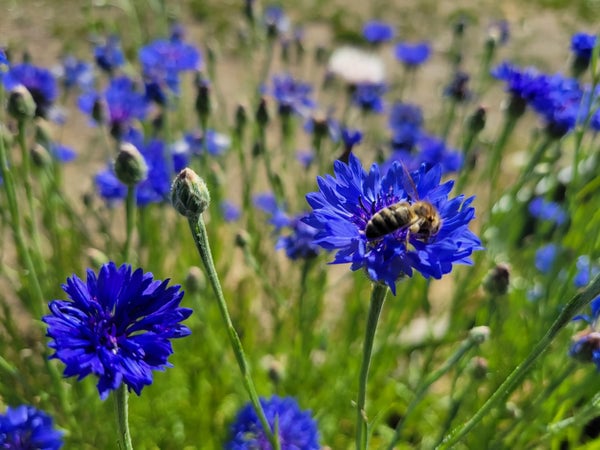When and How to Plant/Sow Marigold Seeds [UK]

Table of Contents
Tagetes Marigolds can be an excellent addition to your garden. They are vibrant and colourful and bring a burst of summer cheer to your garden. By placing them in your garden, you can increase the diversity of plants, keep the soil protected, and keep your garden growing strong.
Tagetes Marigolds are low maintenance and do not require much care. They are annual plants that last only one season and can be replanted every year. Their flowers look lovely in hanging baskets, planters, or ornamental borders and beds. You can grow them from seed or buy them as seedlings or as garden-ready plants.
Once established, they are pest-free. They can even be planted as a deterrent to nasty pests that harm other plants. But to help them grow well, you should know when to plant marigold seeds uk. Check your local weather condition and specific location before planting them to get the best results.
Sowing Tagetes Marigolds

Tagetes marigolds start flowering within a few weeks of sowing. You can sow the seeds indoors in early spring so that they start flowering in early summer or in late spring for later blooms. If you decide to sow them indoors, choose a warm area. You can transplant the seedlings into modular trays or small pots and grow them in a well-lit, warm place. Transplant them outdoors following the last frost.
If you’re wondering when to plant marigold seeds uk outdoors, sow the seeds a few weeks before the last frost of spring. Give proper spacing to the seedlings. You can place them 10-20 cm apart, depending on their variety and size. Clear the planting area of any debris, rocks, gravel or weeds. You can use a garden fork to loosen the soil to a depth of 6-8 inches. This is extremely important as it will help the roots penetrate the soil easily. Cover the tagetes marigold seeds once sown. When planting them, grow them in a sunny area of your garden where they receive shade in the afternoon. You should also ensure that the soil is well-draining.
If you’re planting tagetes marigold seeds directly in the ground, space them as per the spacing recommended on the seed packet and sow them about 1/4 inch. If you’re transplanting seedlings, you’ll have to dig a hole larger than the seedling root ball. Place the seedling carefully in the hole, and fill the area with soil. Water them well so that they can grow to their full potential.
Tips and Tricks to Help Tagetes Marigolds Grow Well
Whether you’re an experienced gardener or a beginner, you can follow a few tips and tricks to make your tagetes marigolds grow well.
1. Where to plant Tagetes Marigolds
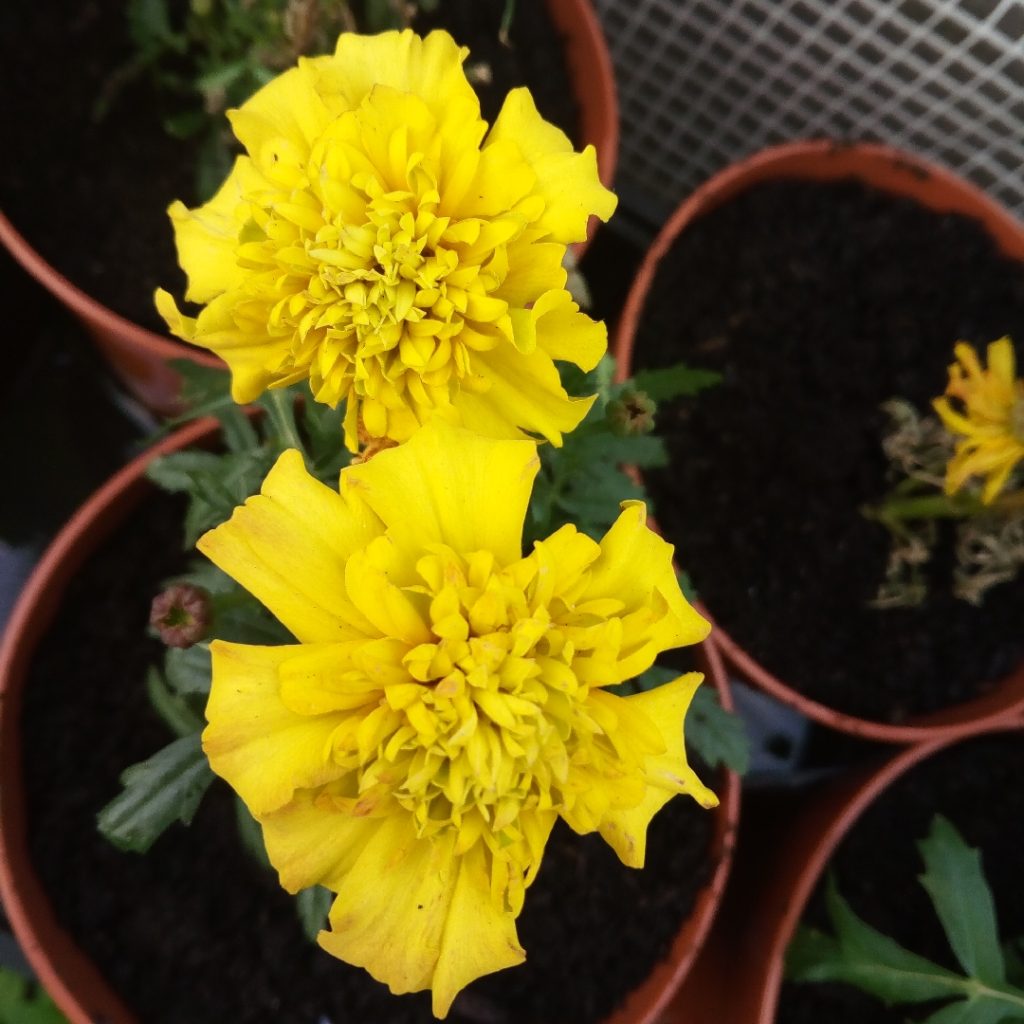
You can grow Tagetes marigolds in any area that receives the optimum amount of sunlight. Choose an area that receives at least 6-8 hours of sunlight daily. The more tagetes marigolds receive sunlight, the better they will grow and flourish. If you’re planning to sow them outdoors, ensure it is not windy. Sow them outdoors after the danger of frost has passed in your area. You should also ensure that the area where you plant them has well-draining soil. Avoid areas prone to waterlogging and places with heavy clay soil. By selecting an area with good drainage, you can provide tagetes marigolds with an excellent growing environment.
You should not plant Tagetes marigolds near peas and beans as it can inhibit their growth. Marigolds attract cabbage white butterflies, so you should avoid growing them near cabbage and cauliflower.
2. Water Requirement
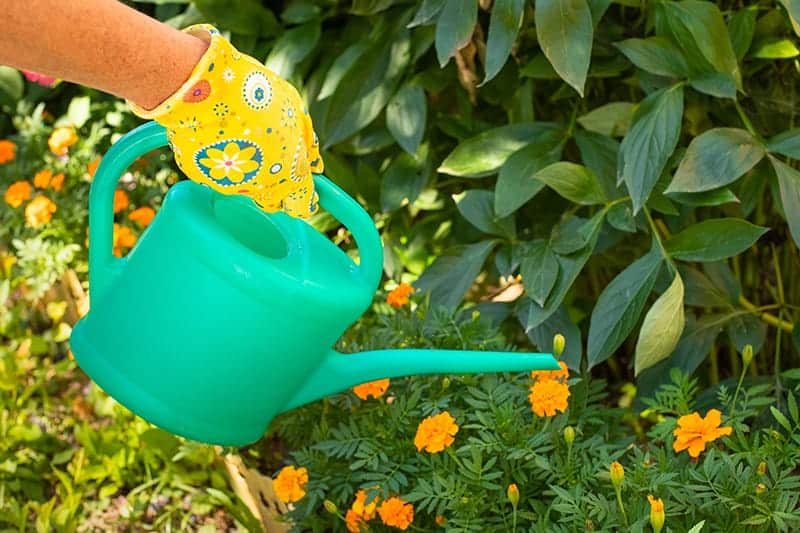
If you have just planted Tagetes Marigolds, they will need moist soil for the first one or two weeks to establish a strong root system. After they become established, you need to water them around once per week when temperatures are high. Provide one inch of water per week when rainfall is insufficient to maintain the moisture level of the soil. Never leave them in dry soil for a long time else they may die. Don’t water them overhead, or else the blooms can rot, and the leaves can get infected by fungus.
Tagetes Marigolds don’t like waterlogged or soggy soil, so do not overwater them. If you overwater them, the nutrients may get washed away from the soil leading to the yellowing of the leaves. Overwatering can also lead to wilting and drooping because when the soil is waterlogged, the roots struggle to uptake oxygen. So adjust your watering requirement as per your local climate and soil type.
3. Soil
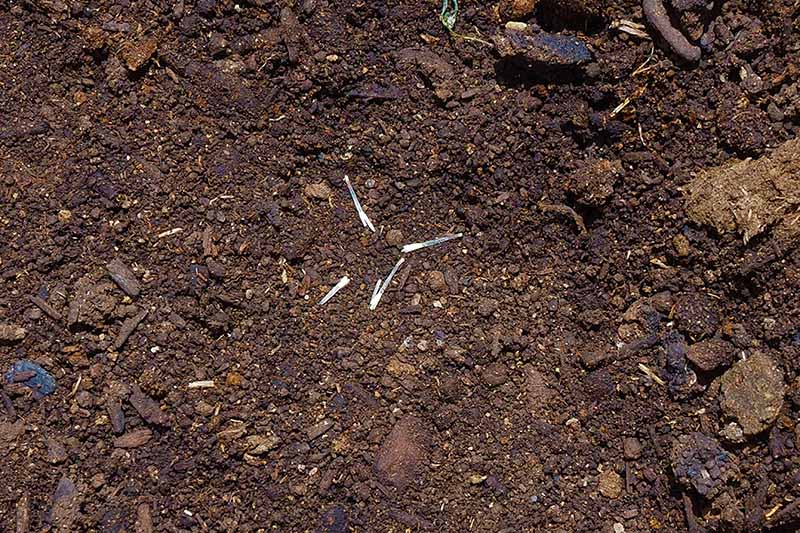
Tagetes Marigolds can grow well in any garden soil with good drainage. Keep the soil pH between 6.0 to 7.0. You can check, using the soil tester kit, the pH of the soil. Avoid growing Tagetes Marigolds in heavy clay soils that can retain excessive moisture. If you notice that your garden soil is poorly drained and heavy, amend it with a low amount of organic matter like well-rotted manure or compost to improve drainage.
Before planting, tagetes marigolds enrich the soil with well-rotted manure or compost. This will increase the nutrient content of the soil and promote healthy root development. But use organic matter in a controlled amount as tagetes marigolds grow better in leaner soil.
4. Temperature and Humidity
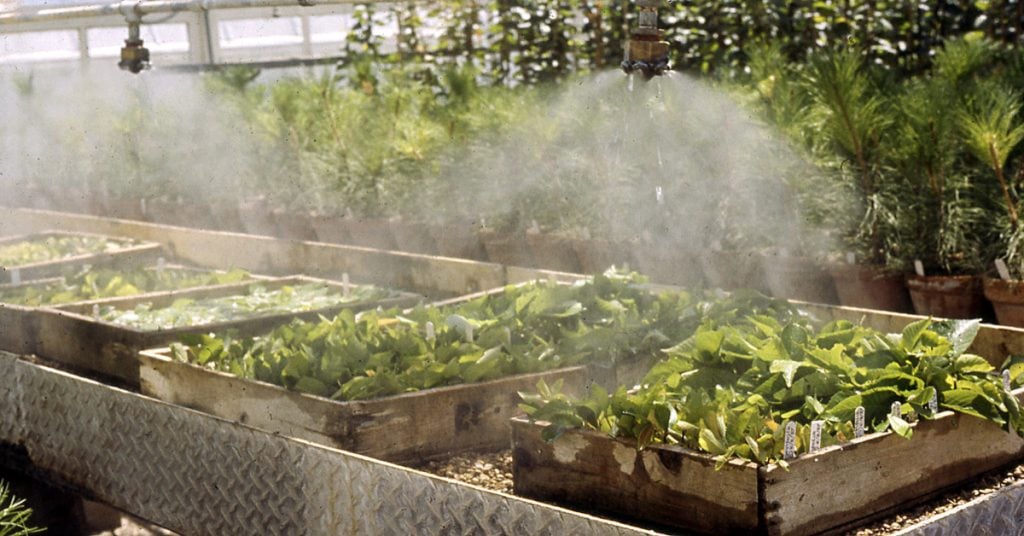
If you’re eager to know when to plant marigold seeds UK, then summer can be the best time. Tagetes Marigolds thrive in summers throughout zones 2-11. Since they are heat-loving plants, you should ensure that they receive a good amount of direct sunlight every day. They may become subdued during extreme summers, but the flowering will pick up again when the weather cools down in later fall and summer.
Tagetes Marigolds can easily adapt to different humidity levels, but they prefer dry air. They can handle fluctuations in humidity to a certain extent. But poor air circulation and excessive humidity can lead to fungal diseases. When planting tagetes, marigolds provide them room for airflow; else, they may get powdery mildew.
5. Fertilizer
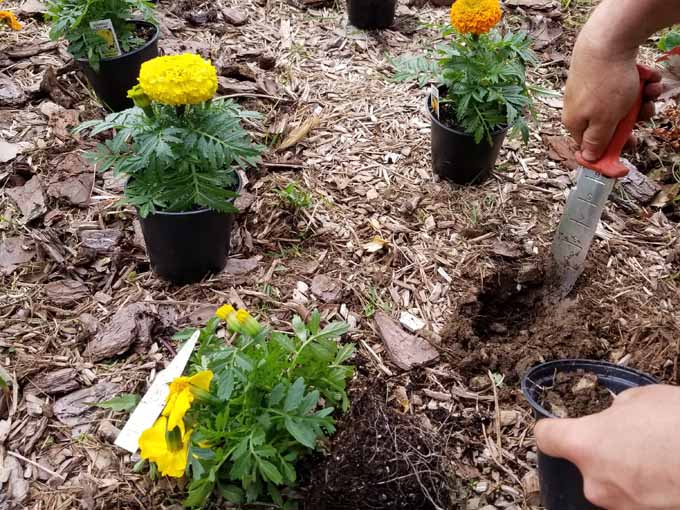
If your soil is extremely poor, you may need to add supplemental slow-release fertilizer to increase its nutrient content. But if the soil is nutritious, you do not need to add fertilizers as tagetes marigolds don’t need any supplemental nutrition to grow well. Fertilization also becomes necessary if you see misshaped or twisted leaves, disease and pest problems, yellow or brown spots on leaves, or sparse and stringy foliage.
But avoid excessive fertilization as this can lead to reduced flower production and excessive foliage growth. You should also take care not to apply fertilizer close to the base of the plant else it can lead to root burn. Do not feed your Tagetes Marigolds with fertilizers having high amounts of nitrogen, as it will promote the lush foliage growth over flowers. The excessive soft leafy growth, along with moisture, will encourage powdery mildew. So choose the fertilizer wisely. You can choose a slow-release fertilizer that promotes flowering.
6. Pruning

Tagetes marigolds start flowering within six to eight weeks after you have planted them. They continue to grow throughout the growing season. You should not prune them until they have reached a height of at least six inches. Prune the tagetes marigolds early in the growing season to encourage flower production. You should also deadhead or remove spent blooms to promote further flowering and keep the plant looking tidy. Check regularly for wilted or faded flowers, and remove them, as leaving dead flowers can lead to the spread of disease.
If the tagetes marigold plants have become overgrown, you should prune them immediately. Look for overly thin or long stems and cut them back by about one-half to one-third of their length. This will encourage new growth. You can prune tagetes marigold plants throughout the growing season but avoid pruning them during drought or periods of stress. It is also not advisable to prune them during the hottest part of the day.
When to Plant Marigold Seeds in the UK
Tagetes marigolds are warm-season annuals. They are quite hardy and can grow well in a wide range of conditions. But they prefer full sun exposure for optimal growth. So choose a sunny spot where they can get six to eight hours of direct sunlight. You can plant them in early summer or late spring when the weather has warmed up. If you decide to sow them directly into your garden, do this about a week after the last average frost date. That way, once the tagetes marigolds germinate, they will not have to go through the risk of late frosts.
Propagating Tagetes Marigolds
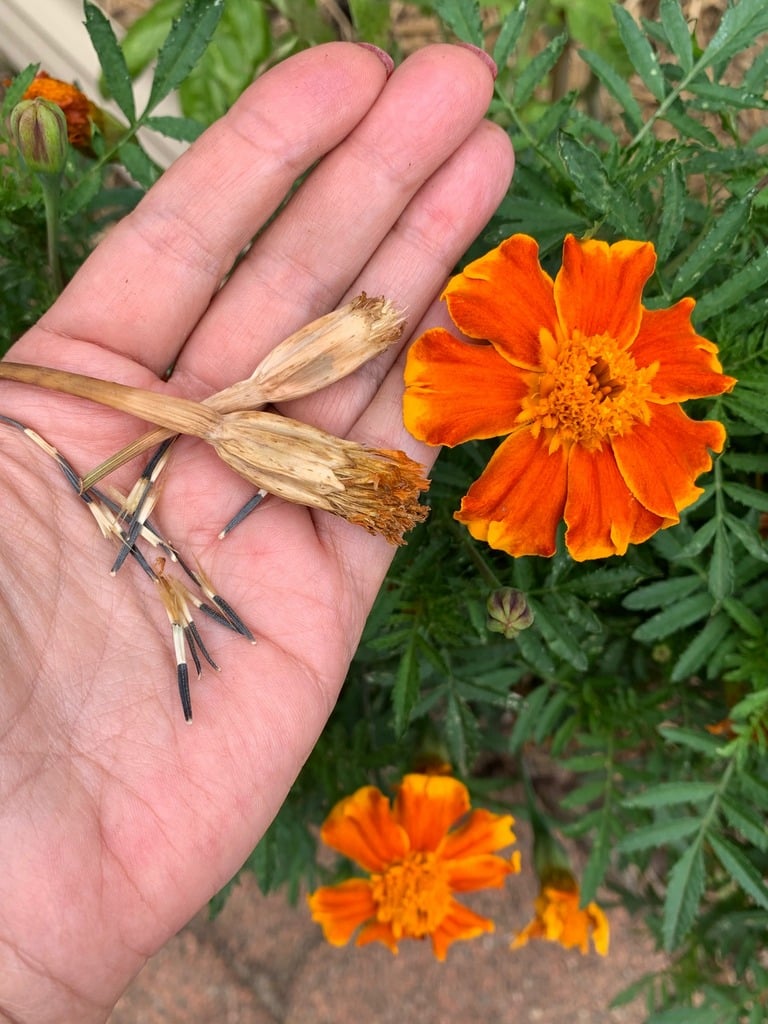
Tagetes marigolds can be propagated easily from seeds. But you can also propagate them with the stem-cutting method. Clip off 4 inches of green stems, preferably without flower buds or flowers, with the help of pruners. From the lower half of the cutting, pull off all the leaves and remove any flower buds or flowers. Dip the cut portion in the rooting hormone. After that, plant it in a small pot filled with a blend of potting sand, soil, and perlite or porous seed-starter mix. Firmly tamp the potting medium around the cutting. Place the pot in a plastic bag in such a way that it becomes an informal greenhouse. Keep the pot in a bright, warm area out of direct sunlight. When the cuttings get rooted, transplant them into larger pots. Allow them to establish well before planting them in the garden.
Common Issues with Tagetes Marigolds

Some of the most common tagetes marigold issues are blights, mildews, and rots. Usually, these diseases show up during warm and wet weather when fungal spores are rampant. By discontinuing overhead watering, you can stop the spread and formation of spores. Slugs and snails may eat the leaves of young plants. If you see ragged holes in leaves, it may be because of snails. Keep the soil free of debris, and set out snail and slug traps, if needed. Aphids can also cause damage to tagetes marigolds. But you can manage the issue with the help of horticultural oils and soaps.
Conclusion
So whether you’re worried about when to plant marigold seeds uk or want to know what temperature will suit them, we hope this article will resolve all your queries. You can plant Tagetes marigolds both indoors and outdoors and enhance the beauty of your garden.
Unlike other ornamentals that require you to stratify seeds or source bulbs, it is easy to grow Tagetes Marigolds from seed. The best thing is that they require little care and can grow well with minimal effort.
Make sure the soil is well-draining and the planting area doesn’t accumulate large amounts of water after rain. So plant them now and add vibrancy and colour to your garden.
Frequently Asked Questions
Why Should You Grow Tagetes Marigolds?
You should grow Tagetes Marigolds because they deter certain pests, add beauty and colour to your garden, attract pollinators, and can be used to make yellow food colour and natural fabric dye.
Do Tagetes Marigolds Come Back Every Year?
Tagetes Marigolds are annuals, so they survive only for one year. However, if you sow them early and then cut them from the vase, they will flower for months.
Are Tagetes Marigolds Good Companion Plants?
Yes, Tagetes Marigolds are good companion plants as they suppress weeds and attract beneficial insects. They can be grown as companion plants with tomatoes, beans, roses, and cabbages.

![Treat Black Spots on Roses [8 Easy Homemade Remedy]](https://staging.thearches.co.uk/wp-content/uploads/How-To-Treat-Rose-Black-Spot-In-3-Easy-Stages.jpg)



